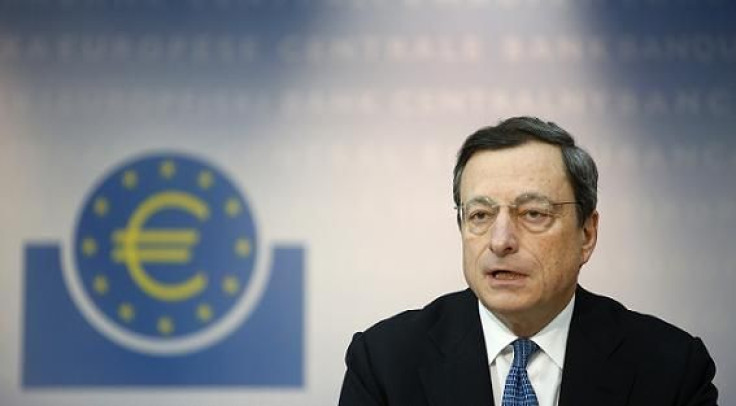ECB Rate Cut Unlikely At December Meeting, Despite Record High Unemployment, Easing Inflation In Euro Zone

After a surprisingly solid upturn in the July-September period, activity in the euro zone is generally perceived to have weakened appreciably in the fourth quarter. At the same time, inflation is reasonably quiescent and widely expected to fall back below the European Central Bank’s 2 percent inflation objective during the course of 2013.
The weakness in the euro area’s economy and the unexpected drop in inflation had naturally led to expectations that the ECB may be prepared to cut interest rates again at its Governing Council meeting next Thursday. However, economists now expect the ECB to keep rates unchanged, preferring to save their last bullet until absolutely necessary.
Eurostat, the European Union's statistics agency, said the annual rate of consumer price growth in the 17 nations that use the euro fell from 2.5 percent in October to 2.2 percent in November, the lowest rate in nearly two years.
“We think inflation could fall quite a bit further over the next year or so in response to the spare capacity in the economy, helping to ease the squeeze on households’ real incomes,” Jonathan Loynes, chief European economist at Capital Economics, wrote in a note to clients. “But whether that will get them spending in an environment of austerity and rising unemployment is another matter.”
Meanwhile, figures released Friday showed that the recession in the euro zone pushed unemployment in the currency bloc to 11.7 percent in October, the highest level since the introduction of the euro in 1999. In all, 18.7 million people in the euro zone are classified as jobless.
Spain again led all 27 European Union countries, with a 26.2 percent jobless rate. Greece’s 25.4 percent in August, the latest month for which data were available, was second on the list.
For youth, the unemployment picture was even worse: 23.9 percent of people under 25 in the euro zone are currently defined as unemployed, Eurostat said. These figures vary starkly between northern and southern European countries as Spain saw 56 percent of its young people out of work, while in Germany only 8.1 percent of the young are unemployed.
Euro zone labor market conditions “are clearly deteriorating,” Loynes said. “And survey indicators of employment intentions point to further heavy job losses over the coming quarters.”
Having boldly pledged to do whatever it takes to save the euro back in the summer, ECB President Mario Draghi has struck a noticeably more cautious tone over recent months.
“We think the ECB is close to running out of ammunition on the rate front and with Eonia below 0.08 percent, overnight rates are in effect already as close to zero as they can be,” Societe Generale economist James Nixon said in a note to clients. “While the ECB could theoretically set a negative deposit rate, we believe the ECB is very reluctant to take this step.”
“The message will be that the ECB is standing ready to use its latest weapon, but is unwilling to make any promises over how effective it will be and reluctant to allow governments to relax their own efforts,” Loynes said.
Draghi acknowledged Friday that government austerity measures would bring “a short-term contraction in economic activity,” something he said was “inevitable.”
“We have not yet emerged from the crisis,” Draghi told France’s Europe 1 radio. “The recovery for most of the euro zone will certainly begin in the second half of 2013.”
© Copyright IBTimes 2024. All rights reserved.












